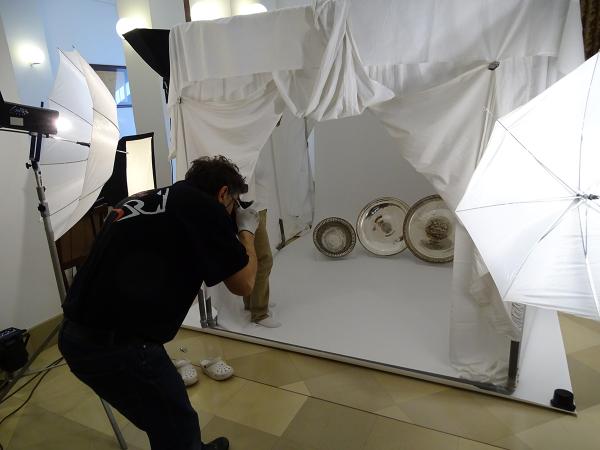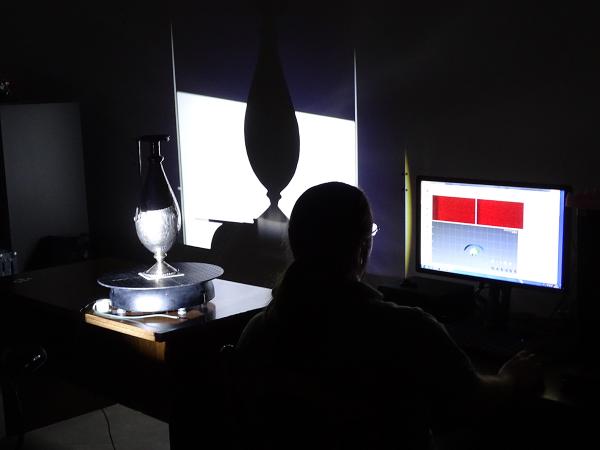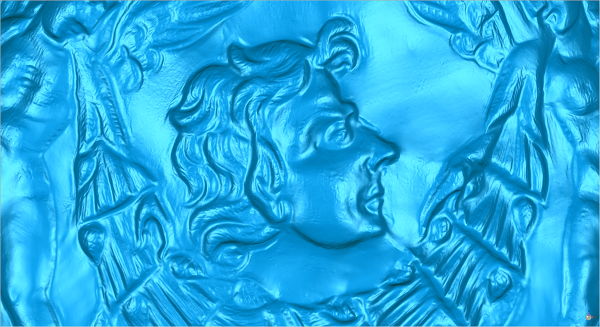Documentation of objects
The task of Sub-project 1 is to document the objects of the Seuso treasure, which provides a starting point for answering further questions of the research and at the same time constitutes a basis for the scientific treatment and publication of the treasure. Under a large light tent, András Dabasi and Judit Kardos, photographers of the Hungarian National Museum, took high resolution, glare-free art photographs of the 14 silver vessels of the treasure, the copper cauldron and the Kőszárhegy stand in full view and in detail, as well as general photos showing the treasure as a whole. A selection of those photographs appeared in the richly illustrated catalogue The Seuso Treasure – the Splendour of Pannonia published for the permanent exhibition.
Studying the details of objects is helped by macrophotographs and images taken by microscope. The endoscopic examination of the invisible internal surfaces of the ewers provides information about their technique of manufacture and interventions of restoration made on the objects earlier.
High resolution, digital 3D models based on laser scanning have also been made of the objects of the treasure and the Kőszárhegy stand. This imaging procedure best suits the objective and detailed documentation of the silver vessels, since 3D models filter interfering factors, such as surface reflection that characterises silver objects and facilitate study of the objects of the treasure independently and anywhere. Sections can be arbitrarily made on the models and precise measurements can also be undertaken. 3D technology is suitable to even out spatial curved surfaces; thus, for example, laying out as a ribbon the decoration on the perfume casket and the ewers. It provides a basis for virtual reconstruction, and films and multimedia contents which present the treasure in the museum.
The innovative results of documenting the objects in 3D and the possibilities of the applied technology were introduced at the conference MUZEUM@DIGIT 2017 held in the Hungarian National Museum.
Head of the sub-project: Zsolt Mráv, archaeologist, chief curator of the Hungarian National Museum, head of the Roman Collection, deputy director of the Department of Archaeology






